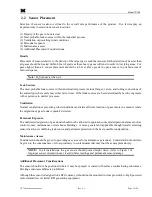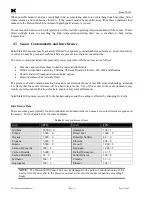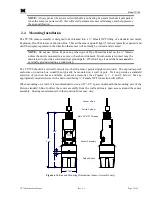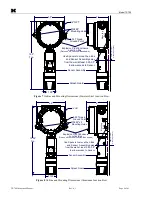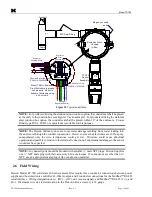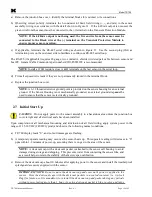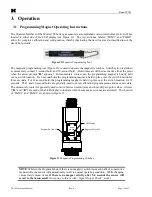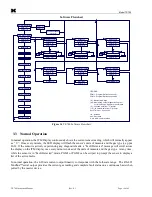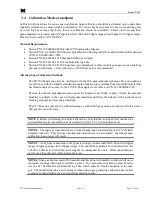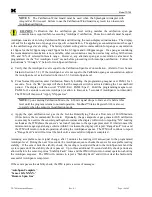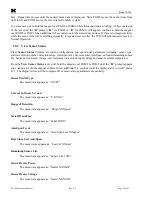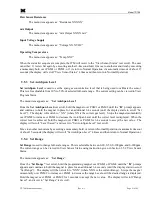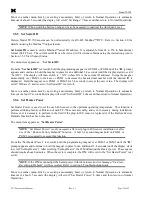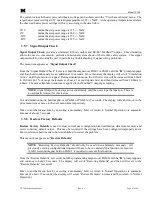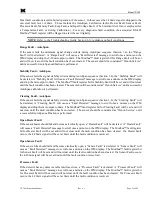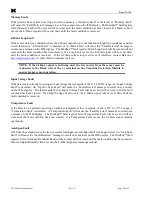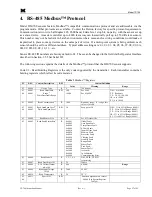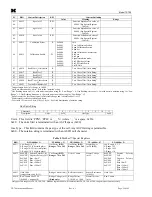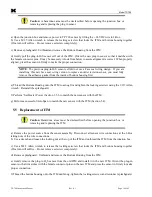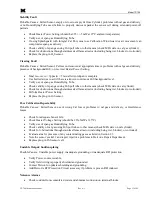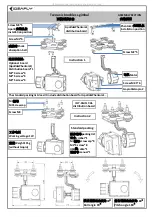
Model TP-700
TP-700 Instruction Manual
Rev. 4.1
Page 18 of 42
NOTE 5:
The Calibration Wind Guard must be used when the Splashguard Adapter with
integral Cal Port is used. Failure to use the Calibration Wind Guard may result in an inaccurate
AutoSpan calibration.
CAUTION:
Verification that the calibration gas level setting matches the calibration span gas
concentration is required before executing “AutoSpan” calibration. These two numbers must be equal.
AutoSpan consists of entering Calibration Mode and following the menu-displayed instructions. The display
will ask for the application of span gas in a specific concentration. The applied gas concentration must be equal
to the calibration gas level setting. The factory default setting and recommendation for span gas concentration
is 10ppm for the 0-20ppm range and 25ppm for the 0-50ppm and 0-100ppm ranges. If a span gas containing
the recommended concentration is not available, other concentrations may be used as long as they fall between
10% and 50% of selected full-scale range. However, any alternate span gas concentration value must be
programmed via the “Set AutoSpan Level” menu before proceeding with AutoSpan calibration. Follow the
instructions “a” through “e” below for AutoSpan calibration.
a)
Verify that the AutoSpan Level is equal to the Calibration Span Gas Concentration. (Refer to View Sensor
Status in Section 3.5.2.) If the AutoSpan Level is not equal to the Calibration span gas concentration, adjust
the AutoSpan Level as instructed in Section 3.5.3 Set AutoSpan Level.
b)
From Normal Operation, enter Calibration Mode by holding the programming magnet over PGM1 for 3
seconds. Note, the “
►” prompt will show that the magnetic switch is activated during the 3 second hold
period. The display will then scroll “PGM1=Exit PGM2=Span”. Hold the programming magnet over
PGM2 for 3 seconds to execute AutoSpan (or allow to timeout in 5 seconds if AutoSpan is not intended).
The ITM will then scroll “Apply XX ppm Gas”.
NOTE:
Upon entering Calibration Mode, the 4-20mA signal drops to 2mA and is held at this
level until the program returns to normal operation. Modbus™ Status Register bit 14 is also set
to signify when the sensor is in-calibration mode.
c)
Apply the span calibration test gas via the In-Line Humidifying Tube at a flow rate of 200-500cc/min
(200cc/min is the recommended flow rate). Optionally, the gas ampoule or gas generator H
2
S calibration
source may be used. As the sensor signal begins to increase the display will switch to reporting “XX“ reading
methods as the ITM shows the sensor’s “as found” response to the span gas presented. If it fails to meet the
minimum in-range signal change criteria within 2½ minutes, the display will report “Range Fault” twice and
the ITM will return to normal operation, aborting the AutoSpan sequence. The ITM will continue to report
a “Range Fault” and will not clear the fault until a successful AutoSpan is completed.
Assuming acceptable sensor signal change, after 3 minutes the reading will auto-adjust to the programmed
AutoSpan level. During the next 30 seconds, the AutoSpan sequence checks the sensor for acceptable reading
stability. If the sensor fails the stability check, the reading is re-adjusted back to the AutoSpan level and the
cycle repeats until the stability check is passed. Up to three additional 30-second stability check periods are
allowed before the sensor reports a “Stability Fault” twice and the ITM will return to normal operation, aborting
the AutoSpan sequence. The ITM will continue to report a “Stability Fault” and will not clear the fault until a
successful AutoSpan is completed.
If the sensor passes the stability check, the ITM reports a series of messages:
“
AutoSpan Complete
”
“
Sensor Life XXX%
”
“
Remove Span Gas
”


